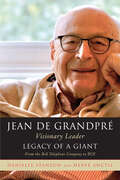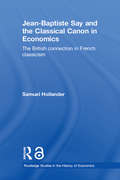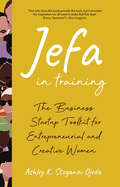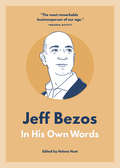- Table View
- List View
Jay Gould, "The Most Hated Man in America"
by Matthew Preble Tom Nicholas John MaskoRailroad magnate Jay Gould, a controversial figure in the history of U.S. capitalism, was a disruptive influence on an industry that had previously relied on formal and informal agreements to move traffic long distances across lines operated by different companies. Gould and his competitors replaced these agreements with consolidation and system-building, a process which led to the rise of government regulation of railroads in the 1880s and to widespread railroad bankruptcies in the 1890s. This case explores the growth of early American railroads, places Gould's career in context (including his famous attempt to corner the U.S. gold market), and demonstrates the implications of his activities on competitive dynamics in the railroad industry.
Jean de Grandpré: Legacy of a Giant
by Danielle Stanton Hervé AnctilVisionary leader and businessman Jean de Grandpré has earned many nicknames: he is known variously as the Simplifier, the Architect, and the Strategist. A lawyer when he joined Bell Canada in 1966, he went on to build a telecommunications empire that spanned the continent, crossing paths with politicians, moguls, and philanthropists along the way.Beginning as Bell’s general counsel, de Grandpré quickly rose through the corporate ranks and became president in 1973. A few years later he created Bell Canada Enterprises, one of America’s largest telecommunications companies. A globally recognized manager and director, he has served on the boards of numerous companies, both in Canada and abroad. As generous as he is discreet, he is involved with several charities, including the Papillon Foundation, which helps disabled children. At McGill University, his alma mater, De Grandpré served as chancellor from 1984 to 1991 and is now governor emeritus and chancellor emeritus.Danielle Stanton and Hervé Anctil retrace the admirable career of this influential man whose life has spanned a century. Offering insight into the secrets of his success, Jean de Grandpré will inspire new generations of entrepreneurs.
Jean-Baptiste Say and Political Economy: Or The Production, Distribution, And Consumption Of Wealth. By Jean Baptiste Say. Tr. From The 4th Ed. Of The French (Routledge Studies in the History of Economics)
by Jean-Baptiste SayJean-Baptiste Say (1767–1832) was one of the first great economists to have laid down the foundations of economic science. Author of the famous Treatise on Political Economy in 1803, which was revised and re-edited on several occasions, he published numerous other works including a voluminous Complete Course in Practical Political Economy in 1828–9. He also taught political economy successively from 1815 until his death in three Parisian establishments: the Athénée, the Conservatory of Arts and Trades, and the Collège de France. <P><P> The texts in which Say exposes his approach to political economy have not been available in the English language until now except for the fourth edition of the ‘Preliminary Discourse’ which serves as an introduction to the Treatise. This book presents a translation which renders his works accessible to the English speaking world. For the first time, English readers will be able to become directly immersed in Say’s principal texts, where he develops his conception of political economy. Jean-Baptiste Say and Political Economy proposes a translation of a selection of eleven of Say’s texts. The first three are versions of the ‘Preliminary Discourse’ from the Treatise’s editions of 1803, 1814 and 1826 with the variations of the editions of 1817, 1819 and 1841. The following four texts are the opening discourses pronounced at the Conservatory in 1820 and 1828 and the Collège de France in 1831 and 1832. The eighth text is the ‘General Considerations’ which open the Complete Course in Practical Political Economy of 1828, with the variations of the 1840 re-edition. The final three texts are those Say devotes to ‘the progress of political economy’ in what is akin to a history of economic thought. <P><P> This volume is of great importance to economic historians and people studying Jean-Baptiste Say, as well as those who are interested in economic theory and philosophy and political economy.
Jean-Baptiste Say and the Classical Canon in Economics: The British Connection in French Classicism (Routledge Studies in the History of Economics #Vol. 72)
by Samuel HollanderThis book explores the perceived paradigmatic conflict within British classical economics between the so called 'Ricardo School' and the contemporary French Economics of Jean-Baptiste Say. Samuel Hollander provides the reader with extensive evidence, utilizing all editions of Say's main texts and his lesser-known writings in order to demonstrate his adherence to much of Ricardian theory. This intriguing book focuses on selected doctorinal issues and surrounding debates, and will interest all serious historians of economic thought, finding a place on the bookshelves of many economists across the world.
Jean-Baptiste Say: Revolutionary, Entrepreneur, Economist (Routledge Studies in the History of Economics)
by Evert SchoorlThis volume is the first full-length biography of Jean-Baptiste Say (1767-1832), the most famous French classical economist. During his lifetime Say actively took part in three revolutions: the French Revolution, the Industrial Revolution and the establishment of economics as an academic discipline. He struggled with Bonaparte, was the owner of a cotton spinning mill, and published his famous Treatise of political economy and many other economic writings.
Jean-Claude Biver (A): The Reemergence of the Swiss Watch Industry
by Ryan L. RaffaelliIn the early 1980s, the Swiss watch industry was near collapse after failing to adapt to Japanese competition from battery-powered quartz technology. In 1982, Jean-Claude Biver purchased Blancpain, a watch company that had been out of business since 1961 but had once made mechanical watches, for $16,000. After successfully reviving Blancpain, Biver sold the company to Nicolas G. Hayek (Chairman of the Swatch Group) for $43 million a decade later. Hayek agreed to have Biver stay on and gave him responsibility to revive the once venerable, but ailing, watch company Omega. Between 1995 and 1999, Biver led another turnaround effort that increased Omega's revenues from $350 million to $900 million. While it was presumed across the industry that Biver would be the next CEO of Swatch Group, in early 2000 Biver began to sense that he may not receive the top position when Hayek retired. At the end of the case, Biver must decide whether he should leave the Swatch Group and retire himself, or possibly start over yet again and take the reins of a small but struggling watch company, Hublot. The case examines the actions that Biver took to transform Blancpain and Omega, and how his broad vision ultimately transformed the entire Swiss watch industry. It presents Biver as a complex leader who at times could be very harsh on his employees, but whose passion and vision engendered fierce loyalty from those who worked with him.
Jean-Claude Biver (A): The Reemergence of the Swiss Watch Industry
by Ryan L. RaffaelliIn the early 1980s, the Swiss watch industry was near collapse after failing to adapt to Japanese competition from battery-powered quartz technology. In 1982, Jean-Claude Biver purchased Blancpain, a watch company that had been out of business since 1961 but had once made mechanical watches, for $16,000. After successfully reviving Blancpain, Biver sold the company to Nicolas G. Hayek (Chairman of the Swatch Group) for $43 million a decade later. Hayek agreed to have Biver stay on and gave him responsibility to revive the once venerable, but ailing, watch company Omega. Between 1995 and 1999, Biver led another turnaround effort that increased Omega's revenues from $350 million to $900 million. While it was presumed across the industry that Biver would be the next CEO of Swatch Group, in early 2000 Biver began to sense that he may not receive the top position when Hayek retired. At the end of the case, Biver must decide whether he should leave the Swatch Group and retire himself, or possibly start over yet again and take the reins of a small but struggling watch company, Hublot. The case examines the actions that Biver took to transform Blancpain and Omega, and how his broad vision ultimately transformed the entire Swiss watch industry. It presents Biver as a complex leader who at times could be very harsh on his employees, but whose passion and vision engendered fierce loyalty from those who worked with him.
Jean-Claude Biver (A): The Reemergence of the Swiss Watch Industry
by Ryan RaffaelliIn the early 1980s, the Swiss watch industry was near collapse after failing to adapt to Japanese competition from battery-powered quartz technology. In 1982, Jean-Claude Biver purchased Blancpain, a watch company that had been out of business since 1961 but had once made mechanical watches, for $16,000. After successfully reviving Blancpain, Biver sold the company to Nicolas G. Hayek (Chairman of the Swatch Group) for $43 million a decade later. Hayek agreed to have Biver stay on and gave him responsibility to revive the once venerable, but ailing, watch company Omega. Between 1995 and 1999, Biver led another turnaround effort that increased Omega's revenues from $350 million to $900 million. While it was presumed across the industry that Biver would be the next CEO of Swatch Group, in early 2000 Biver began to sense that he may not receive the top position when Hayek retired. At the end of the case, Biver must decide whether he should leave the Swatch Group and retire himself, or possibly start over yet again and take the reins of a small but struggling watch company, Hublot. The case examines the actions that Biver took to transform Blancpain and Omega, and how his broad vision ultimately transformed the entire Swiss watch industry. It presents Biver as a complex leader who at times could be very harsh on his employees, but whose passion and vision engendered fierce loyalty from those who worked with him.
Jeanette Clough at Mount Auburn Hospital
by Ayesha Kanji Laura Morgan RobertsJeanette Clough, the CEO of Mt. Auburn Hospital, successfully leads a turnaround for the struggling local hospital. When she assumed leadership of Mt. Auburn in 1998, the hospital had recently suffered a $10 million loss. During her first six months, several members of the senior leadership team quit. Clough successfully led this change effort through a transparent, collaborative approach that focused first and foremost on patient care. She was skilled at building trust and credibility with key constituents: the trustees, medical staff, and employees. After the first year, they reduced the losses to $5 million. In 2000, the hospital broke even. In 2004, the hospital earned a $7 million profit. The hospital is currently in the midst of a capital campaign to update the facilities and expand. Community groups are resisting the hospital expansion in Cambridge, posing a new set of challenges. Clough must also be clear about the strategic positioning of the hospital--a mixture of a community and teaching hospital. How can Mt. Auburn maintain this unique positioning without attempting to expand beyond its reach in competing with the other Boston-based teaching hospitals?
Jeanne Lewis at Staples, Inc. (A)
by Linda A. Hill Kristin C. DoughtyJeanne Lewis, after six years with Staples, Inc., is promoted to senior vice president of marketing. She is to work for fifteen months alongside her predecessor, a legacy in the organization, "learning the ropes" before he moves on. This case is set nine months after she begins working with the marketing department. Staples has just emerged from a period of prolonged litigation around an FTC antitrust suit challenging Staples' attempted merger with Office Depot. Post-merger, Lewis must determine how the marketing department can most effectively and efficiently help the company maintain its competitive edge in an increasingly competitive and complex market. Looks at the challenges a middle manager faces "taking charge" and managing change in a revitalization situation in which a more evolutionary approach is appropriate.
Jeanne Lewis at Staples, Inc. (A) (Abridged)
by Linda A. Hill Jennifer M. SuesseJeanne Lewis, after six years with Staples, Inc., is promoted to senior vice president of marketing. She is to work for fifteen months alongside her predecessor, a legacy in the organization, "learning the ropes" before he moves on. This case is set nine months after she begins working with the marketing department. At this time, Staples has just emerged from a period of prolonged litigation because of an FTC antitrust suit challenging Staples' attempted merger with Office Depot. Post-merger, Lewis must determine how the marketing department can most effectively and efficiently help the company maintain its competitive edge in an increasingly competitive and complex market. Looks at the challenges a middle manager faces "taking charge" and managing change in a revitalization situation in which a more evolutionary approach is appropriate.
Jeder Job kann glücklich machen: Hol Dir die Freude an der Arbeit zurück
by Marion Lemper-PychlauGlück ist immer eine Eigenleistung. Darum birgt jeder Job trotz aller Widrigkeiten das Potenzial, erheblich zur Erfüllung und Bereicherung des eigenen Lebens beizutragen. Dazu sind Entschlossenheit und Geschick erforderlich, denn Glück braucht Know-how. Die Autorin gibt zahlreiche Hinweise und Tipps, wie jeder Beschäftigte auf seine ganz eigene Weise jeden Tag, an jedem Arbeitsplatz selbstverantwortlich freudvolle Momente entstehen lassen kann.Zugleich wendet sich die Expertin für Arbeitsfreude gegen die Konzepte der unablässigen Selbstmotivierung und Zweiteilung nach der Work-Life-Balance. Sowohl Arbeit wie Freizeit sind wertvolle Lebenszeit. Deshalb gilt es, auch das Glückspotenzial der Arbeit auszuschöpfen und die Arbeit genau wie die Freizeit mit allen Kräften zu genießen.
Jeder kann wirken: Von Executives lernen: auftreten, antworten, reden
by Stefanie Etzel Sabina Wachtel Kerstin KöhlerErfahren Sie, warum und wie Spitzenmanager und Politiker in Gespräch und Vortrag so gut wirken und sich in Diskussionen immer wieder durchsetzen. In diesem Buch verraten Autoren, die als Experten mit den Auftritten exponierter Personen in Wirtschaft, Politik und Gesellschaft zu tun haben, wie diese sich darauf vorbereiten bzw. vorbereitet werden und was weniger Prominente für ihr Auftreten auf der Bühne des Lebens davon nutzen können. Ob beim ersten Date oder einem Job-Interview, der Dinnerspeech zur Hochzeit des besten Freundes oder einer Präsentation vor dem Vorstand: Wenn es darauf ankommt, will man die beste Wirkung entfalten. Das lässt sich von den Profis lernen: gut auftreten, antworten, reden und einfach besser 'rüberkommen – Executive Communication für alle.
Jedes Jahr eine neue Sau: Wie Manager den Methodenwahn durch Souveränität ersetzen
by Sabine DietrichAgilität und Design Thinking, Holacracy und Beyond Budgeting ... Ja, es ist schon wieder eine Methodensau unterwegs durchs Management-Dorf. Es ist die neueste, aber bei Weitem nicht die erste ihrer Gattung. Es wurden schon viele durchgetrieben. Und erneut keimt in Managern die Hoffnung: Wenn sie diese Sau für sich erlegen, wird ihr Unternehmen für die Zukunft gerüstet sein. Diesmal ist es wirklich die große innovative Idee, die alles verändern wird. Aufruhr entsteht - leider aber auch zu oft ein enormer Flurschaden. Denn der Wahnsinn, in den die vielen Treibjagden ausarten, kommt Unternehmen teuer zu stehen. Die entstandene Methodengläubigkeit grenzt geradezu an Wahnsinn, weil keine rationale Abwägung mehr dahintersteht. Sabine Dietrich analysiert in ihrem neuen Buch, wie und warum sich Unternehmen heute blind in immer neue Methoden treiben lassen. Sie identifiziert die Merkmale dieser Treibjagd, ihre Treiber und auch ihre verheerenden Folgen auf Menschen und Organisationen. Darüber hinaus bietet sie einen klaren Ansatz, wie Verantwortliche aus dieser unheilvollen Hatz aussteigen und souverän ihren unternehmensspezifischen Ansatz entwickeln können.
Jeepers! Inc. in 2000
by Nabil N. El-HageAfter the company's IPO is withdrawn, the company enters a period of severe financial distress. The consultants recommend that the company be liquidated. The CEO must convince the board, the lenders, and the landlords that the company can and should be saved.
Jefa in Training: The Business Startup Toolkit for Entrepreneurial and Creative Women
by Ashley K. Stoyanov OjedaStep-by-Step Toolkit to Turn Your Passion Project into a Successful Business“...a much-needed guide for all of us who need a blueprint to becoming a successful entrepreneur.” —Eva Longoria, award-winning actress, producer, director, activist, philanthropist and CEO of UnbeliEVAble Entertainment#1 New Release in Hispanic American Demographic StudiesWomen, now is the time to build your enterprise. Jefa in Training is the only Spanglish project-launching toolkit and female entrepreneur planner specially made for a new generation of boss women.A solopreneur and small business guide. A business startup planner and toolkit for women in leadership, business, and beyond, Jefa in Training offers women entrepreneurs the female empowerment needed to take a side hustle to the next level. Whether it’s learning to define your brand, set up a beta test group, or draft an LLC operating agreement, this compendium of lessons, anecdotes, worksheets, templates, and quotes teaches the next generation of women in business how to work for yourself and turn your ideas into something much bigger.A Latina book by Latinas, for Latinas. Solopreneurs and creatives, you are invited to let go of your fears and finally launch your blog, project, or platform. Jefa in Training isn’t your typical small business book. Part Latinx book, it is a conversation with a special tribe of Latina immigrants, Hispanic American generations, and women of color in financial, media, entrepreneurial, and creative spaces. Explore a more complex view of Latinidad, covering everything from imposter syndrome to micro-aggressions and bilingualism.Inside find: Author's first-hand experiences Guest stories from successful business-women in Latinx companiesWorksheets and more!If you’re looking for Hispanic books, women entrepreneur books, women leadership books, or women of color gifts―like Mind Your Business, The Memo, In the Company of Women, or De Colores Means All of Us―then you’ll love Jefa in Training.
Jefes: Aprenda a conocerlos y gane su confianza
by Xavier GuixSi aprendemos a mirar a nuestro jefe de una manera diferente seremos capaces de mejorar nuestra relación con él. ¿Qué creencias e ideas preconcebidas tenemos sobre nuestros jefes? ¿Qué consecuencias tienen estas creencias cuando tratamos con ellos? La mayor parte de esas ideas y prejuicios son negativos, y condicionan considerablemente las relaciones en las empresas. Todos hemos oído o pronunciado frases como: o En el trabajo el jefe no puede ser tu amigo.o El jefe nunca acepta que no tiene razón.o Los jefes no hacen nada, están todo el día reunidos.o Los jefes toman decisiones sin conocer realmente los problemas. Xavier Guix recoge y desarma estas y otras muchas creencias negativas acerca de los jefes, tan extendidas entre los empleados, y propone sustituirlas por nuevas actitudes, más operativas y útiles, y que ayuden a generar un cambio positivo en la relación con nuestros superiores jerárquicos. Al fin yal cabo, la manera en que nos entendamos con el jefe condicionará nuestra capacidad para progresar profesionalmente y para ampliar nuestro horizonte en el trabajo. Reseñas:«Es un libro excepcional para comprender qué creencias y miedos existen detrás de la figura de los jefes y cómo podemos construir relaciones más saludables y positivas, desde una visión innovadora, inspiradora, práctica y llena de sabiduría. Enhorabuena, Xavier.»Pilar Jericó, escritora, socia y directora general de Be-Up «"Mente clara y corazón tierno", Xavier Guix une ambos principios en este nuevo libro. Su experteza en comunicación y creencias, unida al concepto de la ecología emocional, ennoblece el mundo de las organizaciones impregnándolas de sentido. Xavier forma parte de nuestras vidas y redes de afecto, así como del proyecto que compartimos en el Instituto de Ecología Emocional.»Mercè Conangla y Jaume Soler, creadores de la ecología emocional «En los tiempos que corren es importante cambiar de forma radical los miedos y bloqueos tradicionalmente asociados a la figura del jefe. Necesitamos generar mayor fluidez comunicativa entre los que ostentan ese cargo y los que no. Xavi Guix nos descubre con su brillantez habitual algunos de los secretos para hacerlo.»Franc Ponti, director del Centro de Innovación de EADA y coautor de Inteligencia creativa «¿Te interesa tener una buena relación con tu jefe o tus colaboradores? Entonces necesitas este libro. ¡Yo lo uso como manual de cabecera!»Antonio González Barrios, socio fundador del grupo Intercom
Jeff Bezos
by Chris McNabO HOMEM QUE REVOLUCIONOU O MUNDO DOS NEGÓCIOS Fundador e CEO da Amazon até 2021, Jeff Bezos é amplamente considerado um dos empresários mais bem-sucedidos do mundo, aparecendo nos lugares cimeiros do índice de riqueza da Forbes.Este livro debruça-se sobre as suas primeiras influências, a sua educação, as decisões que tomou na sua impressionante carreira e o modo como construiu e gere o seu império de negócios, que teve início numa startup fundada na sua própria garagem. Atualmente, Jeff Bezos mantém-se como o principal acionista da Amazon, mas os seus interesses viram-se agora para áreas como a filantropia, a educação da geração mais jovem e a exploração do espaço, tendo fundado a empresa de astronáutica Blue Origin e realizado em 2021 a sua primeira expedição ao espaço.
Jeff Bezos: In His Own Words (In Their Own Words)
by Helena HuntOver five hundred quotations from the man Warren Buffett called “the most remarkable businessperson of our age.”Jeff Bezos started Amazon in 1994 as an online bookstore based out of his garage. Since then, the ever-expanding enterprise has revolutionized shopping and, in many important ways, invented e-commerce as we know it. Today, Bezos’s vast empire includes everything from cloud computing and fresh food delivery to movie production and consumer electronics. In recent years, Bezos also has invested in rocket technology, newspaper publishing, and artificial intelligence. Every arm of his business, however, is guided by a fundamental goal: to give customers what they want before they even think to ask for it.Jeff Bezos: In His Own Words offers a unique look into the mind of one of history’s most successful entrepreneurs by collecting more than five hundred of Bezos’s quotes on business, technology, customer service, e-commerce, innovation, entrepreneurship, and more. Meticulously curated from interviews, speeches, shareholder letters, and other sources, this book creates a comprehensive picture of Jeff Bezos, his obsessions, and what makes his ventures thrive.After all these years, Bezos still operates on what he calls “Day One time,” in order to maintain the early experimental spirit of his business. Jeff Bezos: In His Own Words reveals in detail a man who wants to push the future forward—and will inspire readers to do the same.
Jeff Bradley (A)
by Vijay V. Sathe C. Paul DredgeJeff Bradley made significant contributions by working well with the prevailing culture in one assignment, and influencing needed change in another--all from a relatively unfavorable position. Series (A-D) presents a rewritten version of an earlier single case by the same author.
Jeff Bradley (B)
by Vijay V. Sathe C. Paul DredgeJeff Bradley made significant contributions by working well with the prevailing culture in one assignment, and influencing needed change in another--all from a relatively unfavorable position. Series (A-D) presents a rewritten version of an earlier single case by the same author.











